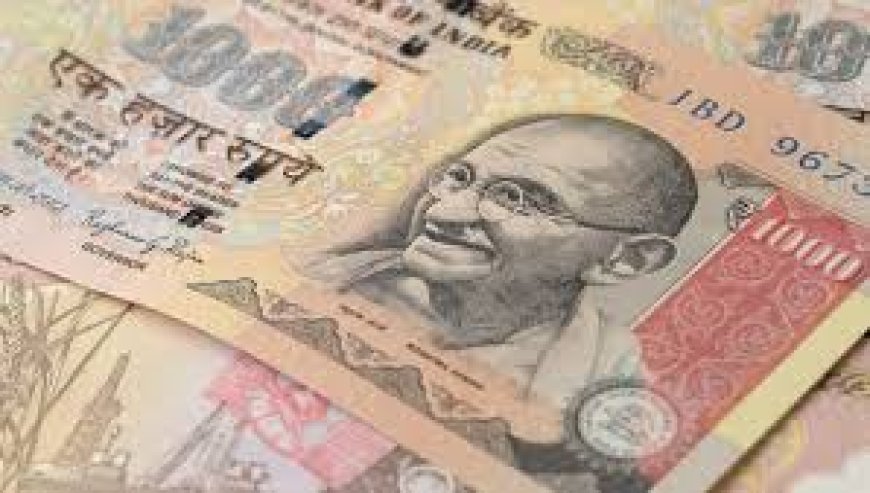India’s GDP Growth Surpasses Forecasts, Easing Pressure on Modi
India's GDP growth exceeds expectations, signaling economic resilience amid global uncertainties and providing a boost to Prime Minister Modi’s government. Analysts weigh in on market impact and investor outlook.

India's economy has once again demonstrated robust momentum, with the latest quarterly GDP figures surpassing analyst forecasts and injecting fresh optimism into a market grappling with global uncertainties. This stronger-than-expected growth provides significant relief to Prime Minister Narendra Modi's administration, which has faced mounting pressure to deliver on its ambitious economic reform agenda.
Economic Performance Beats Expectations
The Ministry of Statistics and Programme Implementation (MoSPI) reported that India’s GDP expanded by 7.8% in the latest quarter, well above the 6.5% consensus estimate by major economic research houses and international organizations such as the IMF and World Bank. This marks one of the fastest growth rates in the last decade and reinforces India's position as one of the fastest-growing major economies globally.
Economists attribute this impressive performance to a combination of factors, including resilient domestic demand, a rebound in manufacturing, strong export performance, and government initiatives promoting infrastructure spending and digital economy expansion.
Analyst Perspectives: What This Means for Modi’s Government
"Surpassing GDP forecasts is a testament to India's underlying economic strength and the effectiveness of recent policy measures," said Dr. Meera Joshi, Chief Economist at Indus Economic Research. "This growth trajectory helps to alleviate some of the political pressure on the Modi government, especially with upcoming elections and persistent concerns about inflation and unemployment."
Joshi added that the government's focus on improving the business climate, accelerating public investments, and boosting digital infrastructure has played a critical role in driving this growth.
Similarly, Rajiv Malhotra, a senior analyst at Global Markets Insights, noted, "This economic data is a strong signal to foreign investors that India remains a viable destination for long-term investment. Despite headwinds such as global trade tensions and tightening monetary policies abroad, India’s domestic economy continues to exhibit resilience."
Market Context and Sectoral Insights
The equity markets responded positively to the GDP announcement, with benchmark indices such as the BSE Sensex and NSE Nifty gaining over 1.5% on the day. Banking stocks, infrastructure companies, and technology firms were among the top performers, reflecting investor confidence in sectors poised to benefit from sustained economic growth.
Manufacturing output expanded by 8.2%, reflecting strong demand both domestically and internationally. The services sector, which accounts for over 55% of India’s GDP, grew by 7.5%, driven by IT services, telecommunications, and retail consumption.
However, inflation remains a challenge, with the Consumer Price Index (CPI) hovering near 6%, just above the Reserve Bank of India’s (RBI) comfort zone. The RBI is expected to maintain a cautious stance on interest rates, balancing growth support with inflation control.
Investor Outlook: Cautious Optimism Prevails
Foreign and domestic investors have welcomed the GDP data, though many remain vigilant about global macroeconomic risks such as rising crude oil prices, geopolitical tensions, and potential supply chain disruptions.
Anita Verma, Portfolio Manager at Horizon Capital, remarked, "India’s economic growth outlook is now more credible, which supports a positive investment environment. We anticipate continued inflows into Indian equities and fixed income, but investors should watch for inflation trends and RBI policy signals closely."
Infrastructure and renewable energy sectors are viewed as particularly attractive due to government incentives and global trends toward sustainability.
Implications for India's Long-Term Growth Path
The recent GDP performance strengthens India's ambition to become a $5 trillion economy within the next few years. Continued reforms aimed at improving ease of doing business, labor market flexibility, and investment in human capital are critical to sustaining this growth.
Prime Minister Modi’s administration is likely to leverage this positive momentum in its policy messaging, emphasizing inclusive growth, job creation, and poverty alleviation ahead of forthcoming state and general elections.
Conclusion
India’s GDP growth surpassing forecasts marks a crucial milestone in its post-pandemic recovery and offers a respite to the Modi government amid a complex global environment. While challenges such as inflation and geopolitical risks remain, the robust economic fundamentals and proactive government policies provide a foundation for sustained growth and renewed investor confidence.
What's Your Reaction?
 Like
0
Like
0
 Dislike
0
Dislike
0
 Love
0
Love
0
 Funny
0
Funny
0
 Angry
0
Angry
0
 Sad
0
Sad
0
 Wow
0
Wow
0












































































